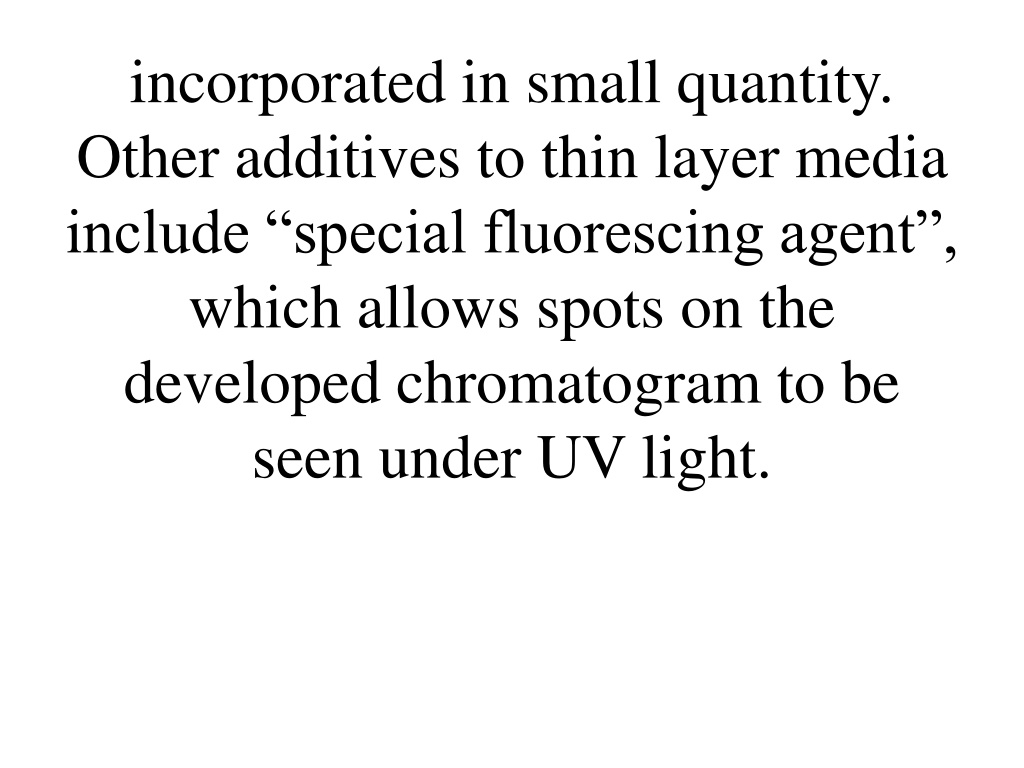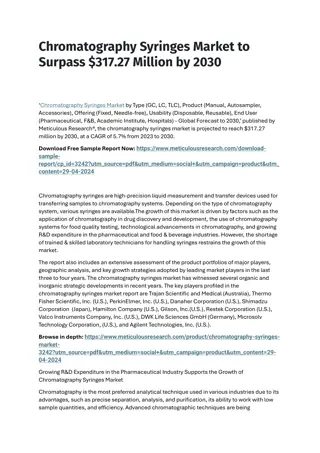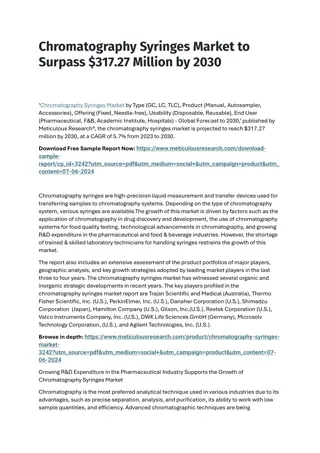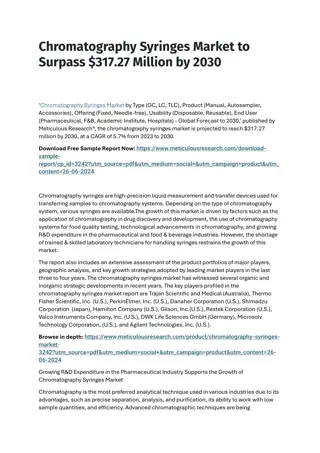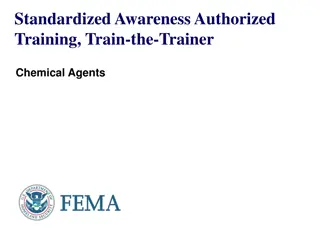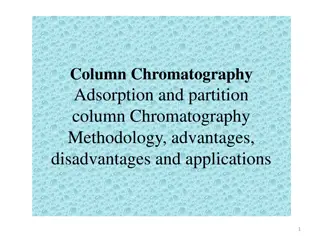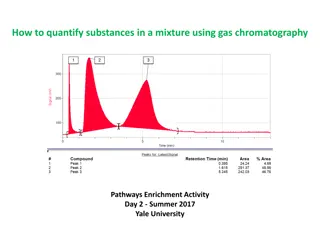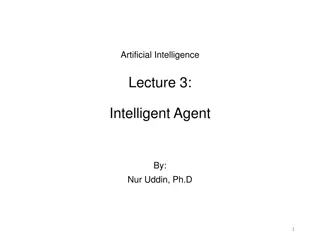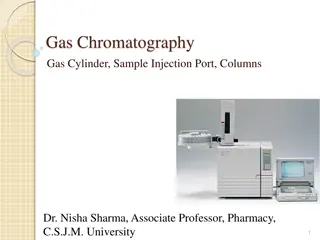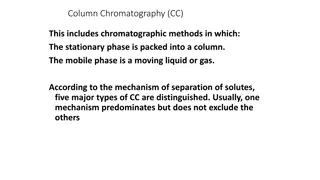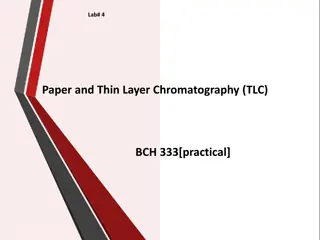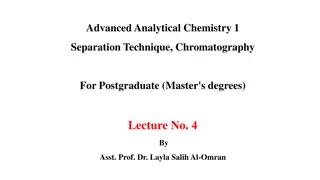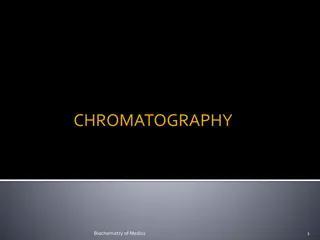Enhancing Chromatography with Fluorescing Agents
Small quantities of additives, like special fluorescing agents, are incorporated into thin layer media in chromatography to enable spot visualization under UV light. The choice of medium and solvent is crucial, and the method is ideal for various applications, including quality control and forensic tests.
Uploaded on Feb 20, 2025 | 1 Views
Download Presentation

Please find below an Image/Link to download the presentation.
The content on the website is provided AS IS for your information and personal use only. It may not be sold, licensed, or shared on other websites without obtaining consent from the author.If you encounter any issues during the download, it is possible that the publisher has removed the file from their server.
You are allowed to download the files provided on this website for personal or commercial use, subject to the condition that they are used lawfully. All files are the property of their respective owners.
The content on the website is provided AS IS for your information and personal use only. It may not be sold, licensed, or shared on other websites without obtaining consent from the author.
E N D
Presentation Transcript
incorporated in small quantity. Other additives to thin layer media include special fluorescing agent , which allows spots on the developed chromatogram to be seen under UV light.
for thin layer chromatography is 0.25mm. Thinner layer usually gives a more rapid but less effectives separation.
the nature of substances being separated and on the material on which it is being separated. A general rule is to match the polarity of the solvent to that of the substances being separated. Sometimes, trial solvents are applied by capillary tube to the center of each spot as shown below.
The method is similar to that of paper chromatography except that the delicacy of many of the layers makes it necessary to take much more care.
Application of Thin Layer Chromatography
partially resolved. Inorganic applications such as separation of metals in alloys, soil and geological samples, and polar organic system, such as mixture of amino acids or sugars in urine are particularly suited for this exercise. TLC is ideally suited for a lot of complex reactions, quality control, purity checks, clinical diagnosis and forensic tests.
ION EXCHANGE CHROMATOGRAPHY
its own and for the exchange to proceed sufficiently; the solid must have an open, permeable molecular structure, so that ions and solvent molecules can move freely in and out. All ion-exchanger sub value in analysis must have the following characteristics:
They are almost insoluble in water and in organic solvent.
that will exchange reversibly with other ions in surrounding solution without any appreciable physical change occurring in the materials.
The ion-exchanger is of complex nature and is in fact polymeric.
CH CH2 CH CH2 CH CH2
Free Electrophoresis, in which the separated substances are in solution and are therefore free to diffuse the moment the current, is switched off.
Zone Electrophoresis, in which the separation is carried out on a supporting medium such as starch gel or strips of filter paper.
